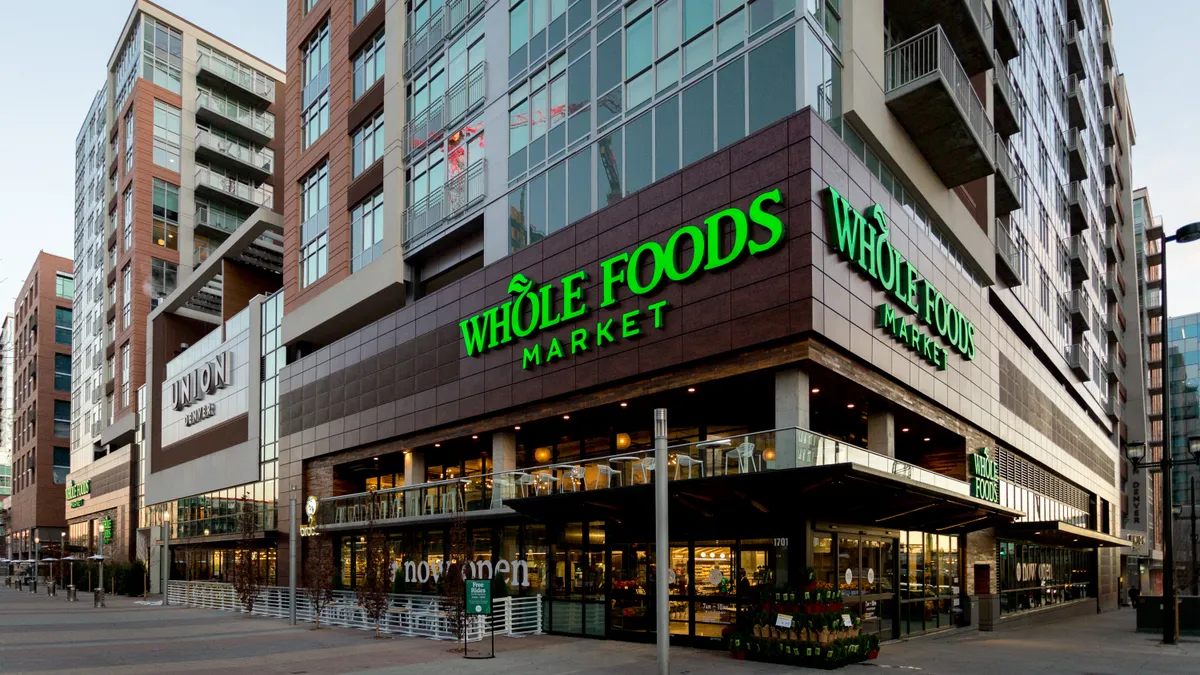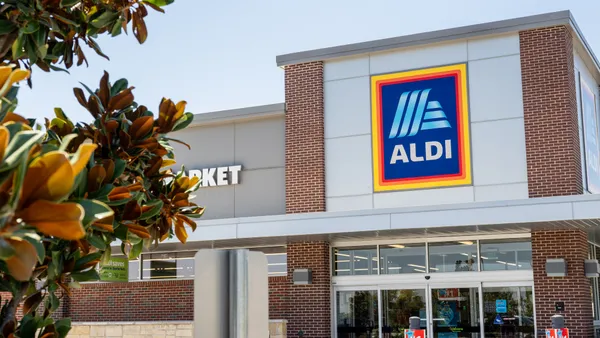Dive Brief:
- Amazon is recruiting gig workers to shop for and deliver groceries for Whole Foods Market customers who place online orders, according to a Bloomberg report.
- Drivers can sign up for the program, known as Shop and Deliver, by reviewing an online tutorial about how to pick, pack and safely handle groceries and passing a quiz.
- The program is related to Amazon Flex, an initiative the e-commerce provider launched in 2015 that uses independent contractors to deliver packages.
Dive Insight:
Amazon’s effort to use contractors instead of employees to pick Whole Foods orders represents a change of course for the company as it continues its drive to disrupt the grocery industry. Whole Foods, which the company bought in 2017, has until now relied on its own store employees to assemble orders from online customers.
The new program brings in an additional dimension to Amazon Flex, which typically limits contractors to driving orders from an Amazon staging facility to customers’ homes. By entrusting gig workers to put orders together for Whole Foods customers, Amazon is potentially increasing the risk that items could be damaged, spoiled or delivered late that is inherent in grocery e-commerce.
“Delivery from A to B is a beautiful on-demand task because it’s very straightforward, very repeatable and you don’t need a lot of training, [but] tasks in stores are often much more complicated,” said Jordan Berke, a former Walmart executive and e-commerce expert who runs Tomorrow Retail Consulting. “A person that comes to your store once a day or once every two days to pick two orders is always learning, while a person that picks 50 orders five days a week” becomes highly familiar with where items are located and how to handle them.
The detailed website Amazon has set up to recruit workers for the Shop and Deliver program reflects the complexity and potential pitfalls associated with the picking process. The site provides step-by-step instructions about how to keep food safe, bag products, select produce and otherwise properly — and efficiently — assemble grocery orders.
“What you’re looking at here is a fairly disruptive efficiency step toward unlocking potential efficiency,” Berke said. “The platform that figures this out and is able to take a part-time on-demand worker and make them as efficient as an in-store dedicated worker does unlock some significant advantages.”
The use of contractors to handle grocery picking is nothing new, of course. Companies like Instacart have depended for years on gig workers to shop for and deliver grocery orders, and Whole Foods itself worked with Instacart until the companies split up in 2019. But while Instacart works as a partner with grocers, Whole Foods has enjoyed an advantage by having its own, store-based employees manage the order-management process.
Amazon’s decision to test the labor model in Whole Foods stores is part of the company’s broader effort to try new ways of selling groceries, something no other company is as well-equipped to do, said Tom Furphy, a former Amazon executive who is now CEO and managing director of Consumer Equity Partners, which invests in retail technology.
The e-commerce retailer’s extraordinarily deep pockets put it in a position to be able to experiment freely and try multiple approaches at once as it looks for the best ways to make inroads in a line of business, Furphy said. Those expansive resources also give Amazon the ability to continuously look for ways to reduce costs while keeping customer service top of mind.
Whole Foods has been concentrating on lowering prices, and the company’s CEO, John Mackey, said its ownership by Amazon has played a key role in helping it cut costs, CNBC reported.
“Amazon is always going to look for ways to keep prices as low as possible. They’re always going to look for ways to keep their cost of service as low as possible, and always look for ways to be super responsive in fulfilling customer demand,” said Furphy, who was formerly Amazon’s vice president of consumables and Amazon Fresh. “Those are three constants that will always exist as long as Amazon’s around, and they will absolutely look to deliver on that in the grocery environment."










